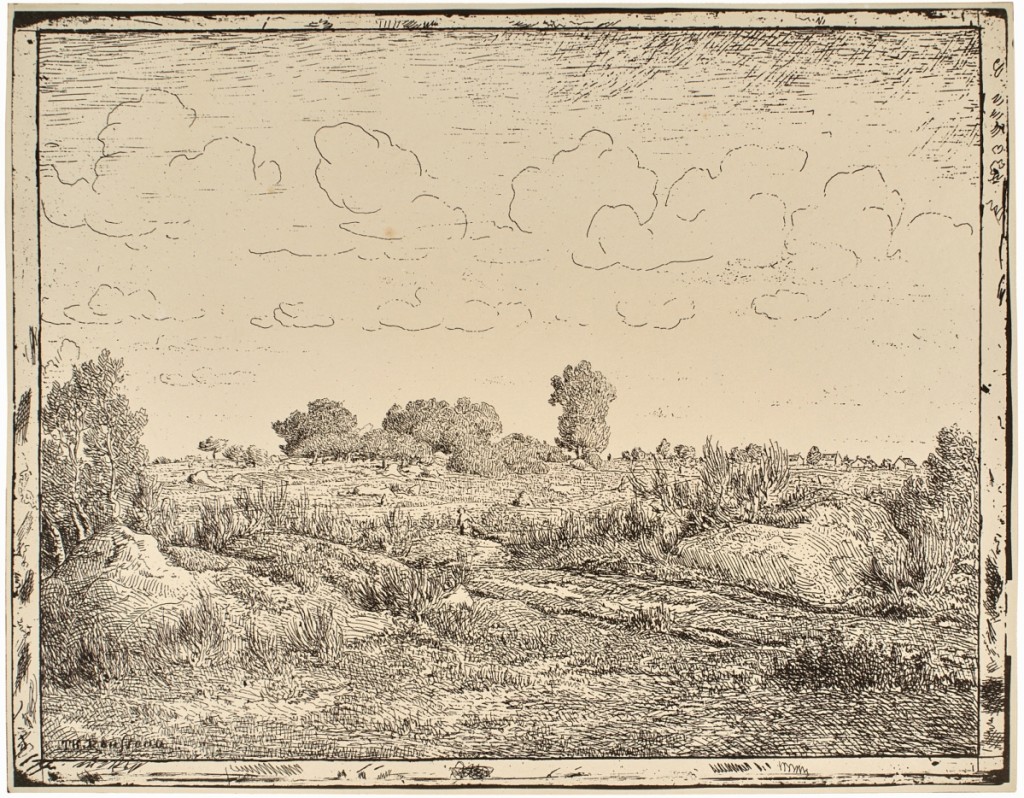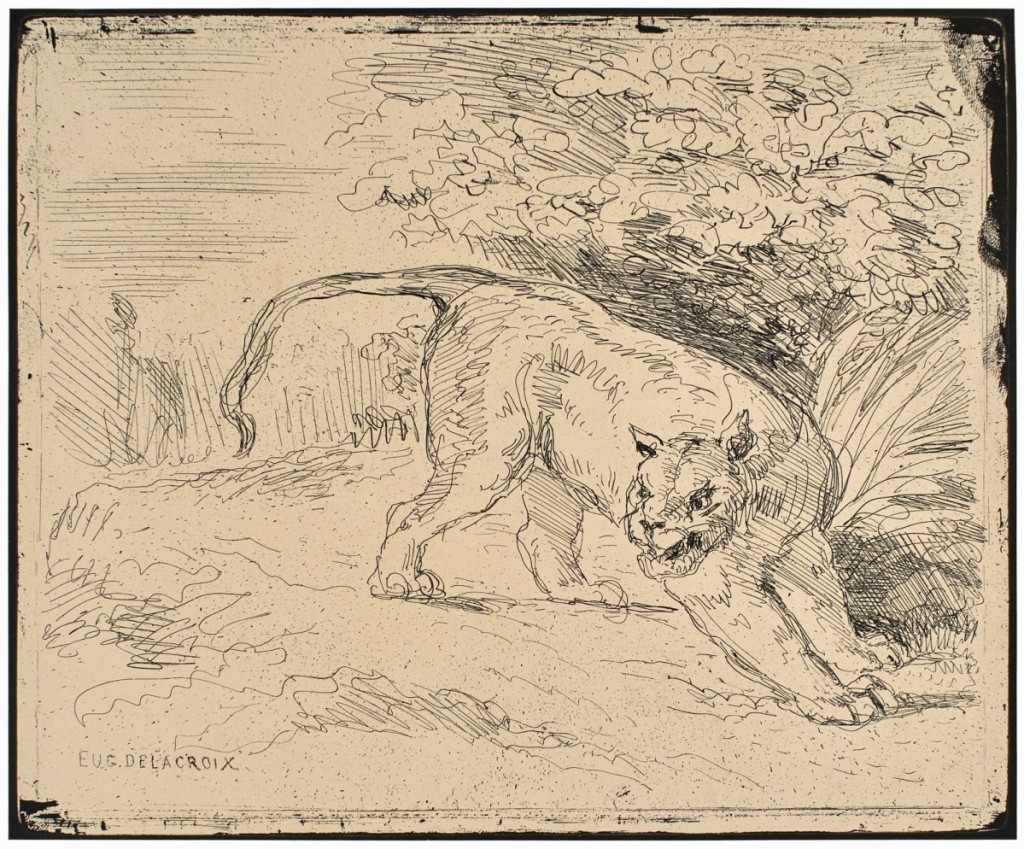
Théodore Rousseau (French, 1812-1867), “The Plain at Plante-à-Biau (La plaine de la Plante à Biau),” 1862, printed 1921.
WILLIAMSTOWN, MASS. – The Clark Art Institute has opened a new exhibition that highlights an innovative photographic technique in “A Change in the Light: The Cliché-verre in Nineteenth-Century France,” presenting 44 cliché-verre prints from a historic portfolio recently acquired by the Clark. The exhibition presents cliché-verre prints made by five French artists: Jean-Baptiste-Camille Corot, Charles-François Daubigny, Eugène Delacroix, Jean-François Millet and Théodore Rousseau. The exhibition is on view in the Eugene V. Thaw Gallery in the Clark’s Manton Research Center through May 16.
Cliché-verre is a hybrid process developed in the mid-Nineteenth Century that combines the techniques of the graphic arts – namely, drawing and printmaking – with those of the then-new medium of photography. The French term derives from early printing terminology and loosely translates as “glass plate,” capturing the notion that the metal plate typically used in traditional printmaking is replaced by one made of glass to create these works. The works presented in the exhibition are drawn from Forty Clichés-verre (Quarante Clichés-Glace), a portfolio released in 1921 by the dealer and publisher Maurice Le Garrec (1881-1937) from a set of original cliché-verre plates. The Clark’s portfolio is one of a special edition of just five that includes two variant printings of each work. In addition to displaying a single complete set of the portfolio’s 40 compositions, the exhibition features eight pairings of variant prints to demonstrate the range of expressive potential in producing a cliché-verre.
“The collection of prints contained in this exceptional portfolio presents a fascinating look into a technique that is little known today but that once represented a significant advancement in early photography and provides us a rare opportunity to witness the historic intersection of important artists as they explored emerging photographic technology,” said Olivier Meslay, Hardymon director of the Clark Art Institute. “It will be an exciting opportunity for our visitors to see these rare works.”
To make a cliché-verre, an artist either coated a transparent glass plate with an opaque layer and incised a drawing into it – a process similar to preparing a metal plate for etching – or painted directly onto the plate. The transparent design was then placed in contact with a sheet of light-sensitive paper and exposed to sunlight to create a print. Like a photographic negative, a cliché-verre plate could be reprinted to produce multiple copies of a single image.
In 1853, in the French town of Arras, a version of the cliché-verre process was devised by Adalbert Cuvelier (French, 1812-1871), an amateur photographer, and Jean-Gabriel-Léandre Grandguillaume (French, 1807-1865), a drawing instructor. The two men promoted their invention to France’s leading artists as a direct and portable way of reproducing their drawings in multiples. More efficient methods of image reproduction replaced the cliché-verre process before it ever achieved widespread popularity, but during the two decades when it was in use, it offered France’s artists a unique visual vocabulary of atmospheric blur, luminous tone and vibratory mark-making. Cliché-verre combined established convention with modern innovation. The prints on view, in which historical scenes and pastoral idylls commingle with landscapes bearing traces of urbanization and industrialization, display daring formal and stylistic experimentation, made possible through the cliché-verre process.
“The cliché-verre emerged out of a period of technological innovation in the arts, marked by the introduction of new mass-circulating printmaking processes, the industrial manufacture of artists’ materials, and the invention of photography,” said Andrew Kensett, the exhibition’s curator. “The process enjoyed a moment of popularity in France because of the collective efforts of an enterprising group of artists – including photographers, printmakers and painters – who were determined to explore the creative possibilities offered by these new developments. “A Change in the Light” celebrates this exploration and investigates the intertwining of process, materiality and meaning in the artworks that resulted.”
The Clark Art Institute is at 225 South Street. For more information, www.clarkart.edu or 413-458-2303.
All cliché-verre photos courtesy Clark Art Institute












